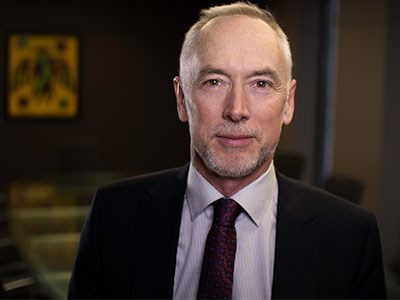A Ring of Fire developer is putting the onus squarely on Queen’s Park to find a way to fold three separate Ring of Fire road studies into one cohesive plan to get moving on building an access corridor to reach the stranded James Bay mineral deposits by 2018.
Though Al Coutts has no knowledge of an exact date on when the provincial and federal governments are expected to make a joint funding announcement on a road, the impatient president-CEO of Noront Resources is anticipating a speedy decision by the province on picking a route and providing a timetable for construction.
“I was already expecting it earlier this year.”
In early August, Noront outlined its Ring of Fire development plan in pegging construction of its cornerstone Eagle’s Nest nickel-copper project to begin in 2018, the first in its stable of chromite and base metals properties. The first concentrate production from Eagle’s Nest begins in 2021.
The company is counting on the province to hold up its end of the bargain with the construction of a permanent east-west road to service the future mines and the remote communities.
Noront’s start date coincides with the province’s scheduled release of $1 billion in promised spending for Ring of Fire infrastructure, targeted for the 2018-19 budget year.
To meet that date, Coutts said it’ll likely take a year’s worth of detailed engineering and environmental work to determine the exact route and pinpoint where the water crossings will be.
“The sooner they make that decision, the faster and better chance we’ve got to get that road constructed by 2018.”
Noront has tabled its own proposal of a 280-kilometre-long road, following the winter road network, extending east from the provincial highway system at Pickle Lake, while the engineers at Hatch Mott MacDonald have prepared a confidential report for the Ontario government.
Last year, the Ring of Fire communities of Webequie, Eabametoong, Neskantaga and Nibinamik received a combined $732,000 from the federal and provincial governments to conduct a regional community service corridor study. All the studies have been filed with the Ontario government.
“All of the pieces of work are together and now we need the province to say what it’s going to do. It’s all in their hands,” said Coutts in coming with an overland solution that meets both the needs of industry and the communities.
Coutts said he has received government assurance that the road will be shared by industry and the communities.
While a specific route hasn’t been officially chosen, it will roughly follow the existing winter road network and thus avoid the major river crossings that a north-south corridor would have to span.
A roll-out of government infrastructure dollars would provide Noront with the necessary backing to head to the capital markets to arrange financing for their $600-million to $700-million project.
“We’re not going to build a mine with no road to it. Once we’re 100 per cent confident that the road will be constructed, we’ll start raising money and building the mine.”
Interlaced with the development discussion is the ongoing regional framework dialogue between the province and the chiefs of the Matawa First Nations to negotiate future development, benefits and environmental safeguards in the Ring of Fire.
The agreement, signed off by Premier Kathleen Wynne in 2014, sets a path and a process for the nine First Nation communities closest to the mineral deposits to have a say in how mineral and infrastructure development will proceed.
“It’s all premised on industrial development,” reminds Coutts.
“I think the province wants to see the economic development. What pays for that infrastructure? What you need to offset all this big investment are the revenues, taxation from the mine and the jobs and training that come with it as well.”
Though Noront is not a party to the regional framework discussion, Coutts said they are “often consulted.”
“These things tend to overlap and interweave, but ultimately at some point in time we’re expecting the province to come out and say what it’s expected to do,” said Coutts.




